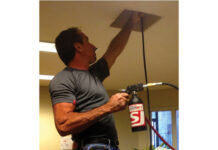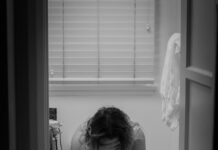Siding is critical to your home’s overall exterior design and protection. It protects against harsh weather conditions, such as rain, snow, wind, and sun, while adding to your home’s aesthetic appeal. In addition, it also provides an extra layer of insulation that helps to maintain a comfortable temperature inside your home. Over time, however, the siding can wear out and become damaged. If you’re wondering whether it’s time for replacement siding, here are some telltale signs to watch out for.
Signs your Home Needs Replacement Siding
- Cracked, Warped, or Rotting Siding
Warping, cracking, and rotting are all signs of age and wear, and they can make the entire appearance of your home suffer. Warping, cracking, and rotting are all caused by water damage, meaning that the siding has likely been exposed to too much moisture over time. This can happen due to poorly installed flashing, frequent storms and floods, or a lack of regular siding maintenance.
Look for crumbling panels or dark spots for wooden siding, as this is a sign that moisture has seeped into the wood fibers and caused the wood to rot. Vinyl siding can also be affected by rot, which can manifest as cracks or warped sections. These areas allow water to seep in and cause further damage to your home’s structure. If you notice any signs of rot, it is important to contact a professional siding contractor immediately for replacement siding to prevent further damage.
- Fading
Over time, exposure to the sun’s UV rays can cause the siding to fade, making it look old and worn. Siding is designed to hold color for a certain amount of time, and if the color has faded, it may indicate that the siding’s waterproofing abilities have also deteriorated. While faded color doesn’t necessarily mean the siding is no longer effective, it is a sign to keep an eye on
- Mold and Mildew
If you notice mold or mildew on your siding or inside your home, it’s a sign that moisture is getting in. This can be a result of damaged or old siding that’s allowing water to penetrate your home. Mold and mildew can cause health problems for you and your family, so addressing the issue as soon as possible is important.
- Bubbles in the Sidings
If you notice bubbles forming under your home’s siding, it’s a clear sign that you need new siding. These bubbles indicate that water has become trapped, which is a cause for concern. Siding is supposed to protect your home from moisture, so any indication of trapped water is a major issue that needs to be addressed.
- Peeling
If the paint is flaking or peeling, it may indicate it’s time to replace your siding. It’s normal for a house to need touch-ups every 8 to 10 years—but if it needs more frequent coats of paint, something might be wrong with your siding. Consider using long-lasting vinyl siding that requires very little maintenance.
- High Energy Bills
Old or damaged siding can cause drafts and air leaks, making it harder for your HVAC system to maintain a consistent temperature. This can lead to higher energy bills, as your HVAC system works harder to compensate for heat loss or air conditioning. If you’re experiencing high energy bills, it’s worth considering Siding Replacement.
- Age
Depending on the age of your siding, it may be necessary to replace it. The life expectancy of siding varies depending on the materials used. Aluminum siding can last 20 to 30 years, wood siding up to 30, and vinyl siding up to 40.
Even if your siding appears to be in good condition, it may be nearing the end of its useful life. Newer siding materials are more energy-efficient and offer better protection against the element. Additionally, if you plan on selling your home soon, new siding can increase its value and make it more attractive to potential buyers.
Conclusion
If you notice any of these signs, it’s important to take action quickly to protect your home from water damage, improve its energy efficiency, and enhance its curb appeal. Working with professional Siding Contractors can help ensure that your replacement siding is installed correctly and that your home remains protected for years.











